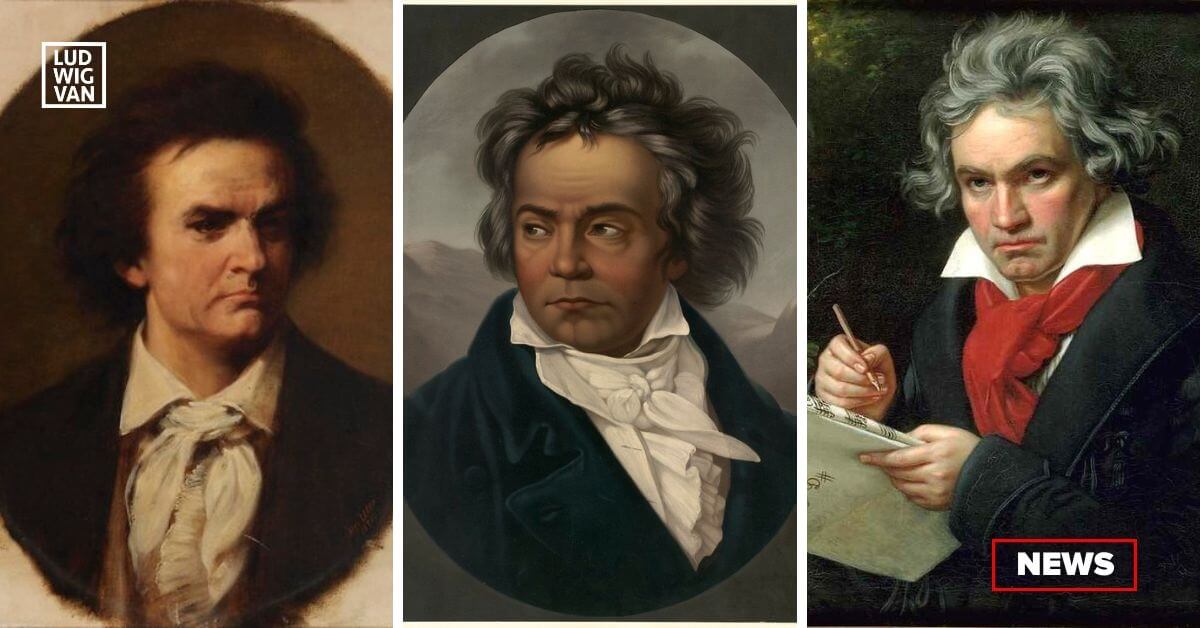
Looking for clues to unravel the mysteries of Beethoven’s life and death, DNA from locks of the master composer’s hair have been sequenced using a genomic analysis. The results weren’t comprehensive, but begin to answer some of the longstanding questions about his health and life.
Researchers from across Europe participated in the study, titled Genomic analyses of hair from Ludwig van Beethoven, published in the latest issue of the journal Current Biology.
Beethoven’s ill health
A day after Beethoven’s death at the age of 56 in 1827, two of his friends found some documents hidden in his desk, in particular the one we now call the Heiligenstadt Testament. Written 25 years earlier, and addressed to his brothers, Beethoven wrote candidly about his health problems, and confessed he’d considered suicide — the only thing holding him back was the idea of dying “before I had produced all the works that I felt the urge to compose.”
He suffered with his health issues from his early 20s until his death. Along with the progressive hearing loss that plagued him for decades, he suffered from ongoing gastrointestinal issues, and was generally considered to have died of liver disease. The cause, however, was not known, and was often ascribed to liquor consumption.
The study
Just how did the researchers get material to analyse? During Beethoven’s time, as it happens, it was a custom to keep locks of hair of your friends as a keepsake. The study began with eight sample of hair that was said to be Beethoven’s from various sources.
- Two did not match the rest, and were eliminated as probable fakes;
- One of the samples they eliminated ended up being from a woman — it had been analysed earlier for various substances, and was often used to claim Beethoven’s dependence on opiates as a result of contracting syphilis, a theory the paper’s authors now refute;
- A third sample was too damaged to be able to ascertain gender-related chromosomes.
They concluded that the remaining five were authentic because the five samples shared various genetic markers. His ancestral matches were clustered along the Rhine River and within present-day North Rhine-Westphalia, coinciding with the areas his known German ancestors were born. There was also documented evidence that supported their authenticity.
The findings
Because of the age of the samples, some analyses could not be performed, and some questions remain unanswered. However, what they did find is fascinating.
- When examining his DNA for known genetic markers that could contribute to hearing loss, the only match they found was to systemic lupus erythematosus (SLE), where he fell within the 93rd percentile in terms of risk;
- However, they could not isolate any of the specifically problematic SLE markers;
- They were able to largely rule out Crohn’s disease (CD) and ulcerative colitis (UC), celiac disease and lactose intolerance;
- IBS was not entirely ruled out, but no evidence supporting the diagnosis was found;
- His genetic risk for liver cirrhosis was in the 96th percentile, and the specific variants most strongly associated with the disease were found in his DNA;
- One of the locks of hair tested positive for HBV or Hepatitis-B.
The surprise
Analysis of the DNA from the samples with known ancestors of Beethoven’s yielded a surprising result. It appears that one of the composer’s forebears was conceived out of wedlock.
The researchers analysed the Y chromosomes from five living members of the Beethoven family. Those five living descendants are only distantly related to each other today, but share a distinct Y chromosome haplogroup that is in turn shared with Aert van Beethoven, a common ancestor of the 16th century. Aert is also Ludwig’s ancestor, but the Y chromosome haplogroup does not match.
The incidence of what scientists call EPP, or extra pair paternity, means that somewhere along the line, another male’s DNA from outside the official family tree was introduced into the mix.
Unproven rumours have existed for some time that Beethoven’s father, Johann van Beethoven, was born as the result of an extramarital affair. While scientific analysis does support the EPP theory, it can’t pinpoint when exactly the paternal DNA diverged from the family tree.
The paper’s authors note that this study only opens the door for future research by history’s scientific sleuths.
As music lovers, we can only count ourselves lucky that Beethoven’s devotion to his art kept him on earth, and composing, as long as it did.
#LUDWIGVAN
Get the daily arts news straight to your inbox.
Sign up for the Ludwig van Daily — classical music and opera in five minutes or less HERE.
- PREVIEW | SUMMER OPERA LYRIC THEATRE Presents Handel’s Xerxes, Mozart’s Idomeneo & Puccini’a La Boheme July 26 To August 4 - July 26, 2024
- PREVIEW | YENSA Festival V.2 Offers Black Flames Performances & Other Ways To Celebrate Black Women In Dance - July 25, 2024
- PREVIEW | Canadian Talent Conspicuous In The Met: Live In HD 2024-25 Season - July 25, 2024



